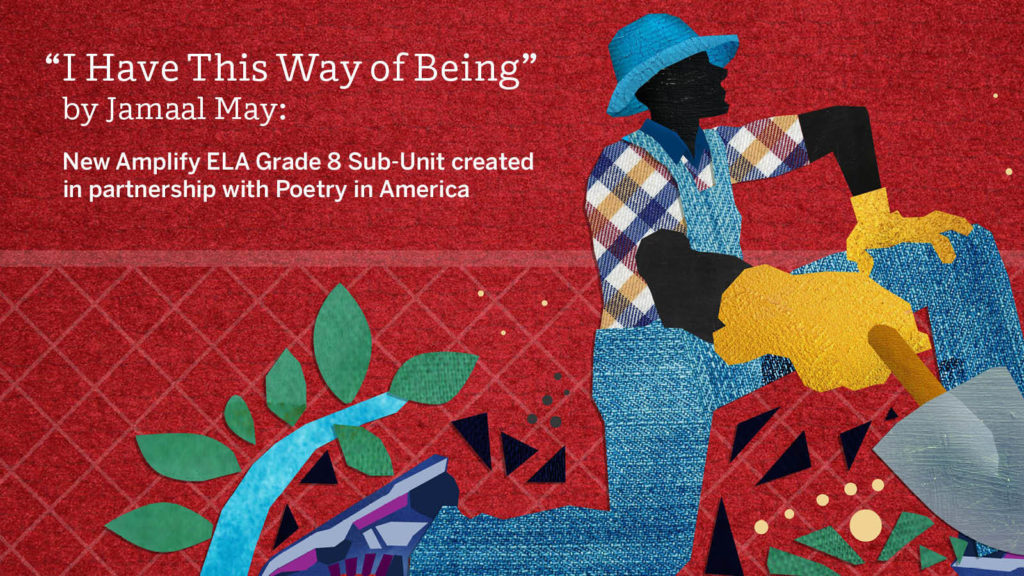Amplify and Poetry in America Release New Grade 8 ELA Content Featuring Jamaal May

By Ollie Marinaccio
Eighth grade, a turning point in adolescence, is a great time to be introduced to contemporary poetry. Reading poetry can feel daunting for newcomers, but at Poetry in America, we work to present poetry not as academic and aloof, but real and relatable—an art form that is great fun, and that instigates growth of the mind. And a large and growing part of that work involves empowering educators with innovative multimedia content and lessons they can take directly into their classrooms.
To reach middle schoolers across the U.S., Poetry in America has teamed up with Amplify, a K-12 education company that is leading the way in next-generation curriculum and assessment. We have co-developed a new sub-unit within Amplify’s Grade 8 ELA curriculum, analyzing a poem by Jamaal May – a contemporary poet from Detroit – entitled “I Have This Way of Being.” The new sub-unit helps students to hone close reading skills, and brings them to the intersection of social issues and art.

“I Have This Way of Being” toes the line between familiarity and distance, with May’s use of familiar nature imagery and approachable couplet structure. On an initial read, the poem is friendly, holding out its hand to new readers by conjuring the recognizable scene of a gardener and garden, before begging for consideration: what does the speaker think of being a gardener? Like the poem itself, the question is outwardly simple but complex on further study. It requires students to ponder the implications of agency, and what it means to tacitly agree to play by the rules. The sub-unit provides students with a crucial framework for analyzing the poem, introducing students to the narratives of enslaved people and drawing their attention to the long, rich history of Black American literature. First students read from Frederick Douglass’s Narrative of the Life of Frederick Douglass, then are asked to “consider the complicated relationship that African Americans have had with land, property, and ideas of ownership and possession.” This method of contextualization lends a crucial framework for analyzing this poem, giving students tools with which to dig beneath the poem’s surface and into the twisted roots of history from which its speaker’s garden grows.
May is a longtime educator, having spent years teaching in the Detroit Public Schools system as the Writer-in-Residence with InsideOut Literary Arts. Now his poem is being taught in classrooms around the country like the very ones in which he used to teach. With this sub-unit, May’s poem teaches readers more about poetry’s intersections with history, politics, and culture.
